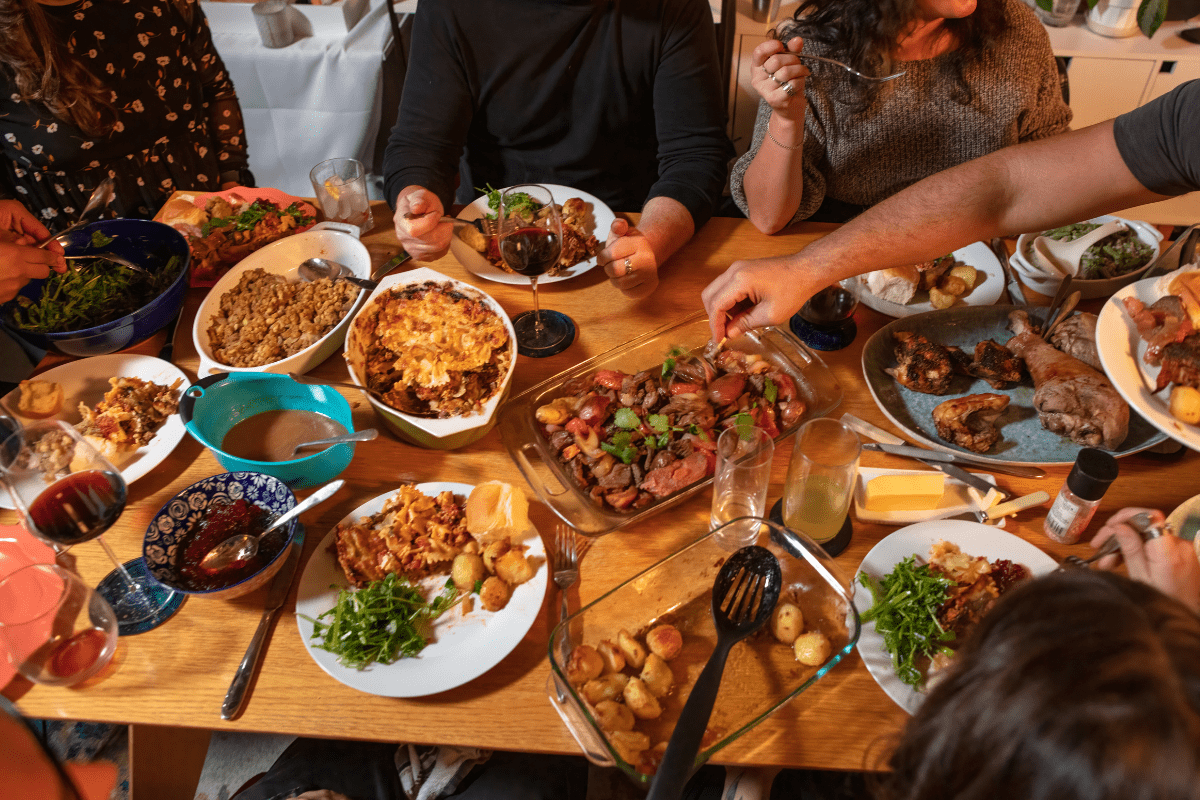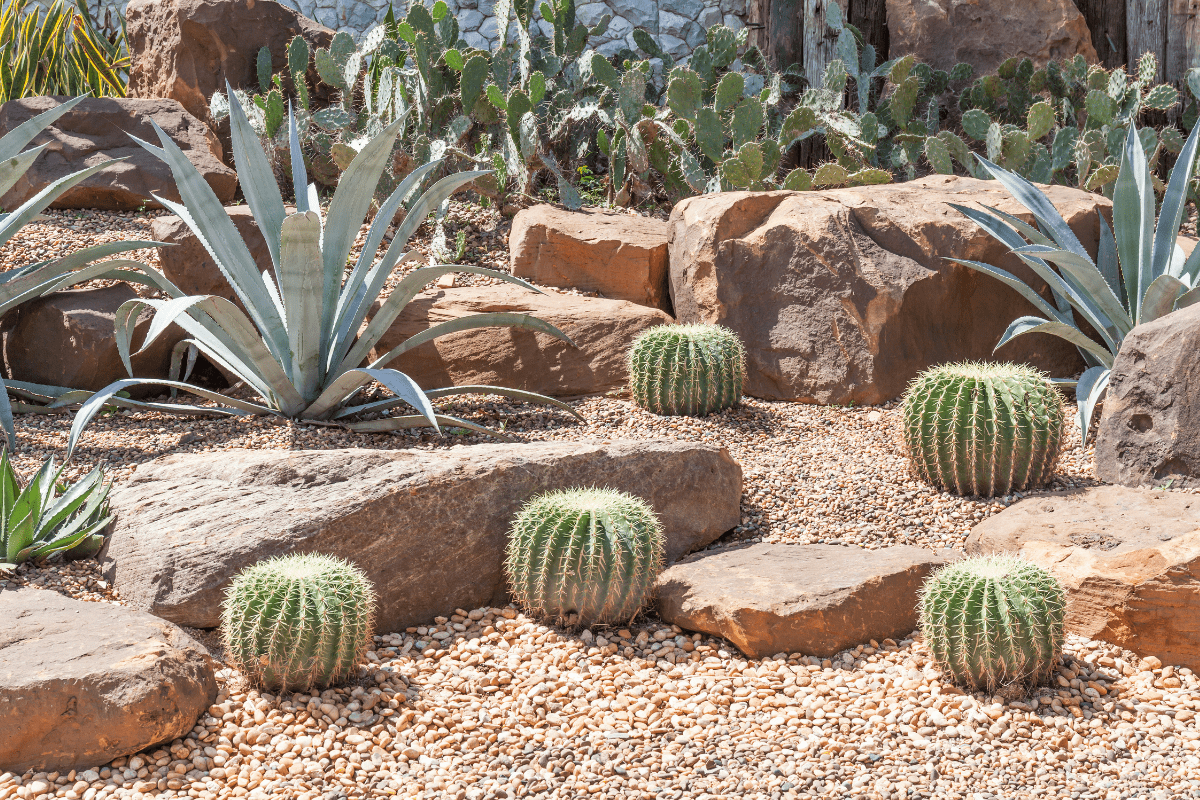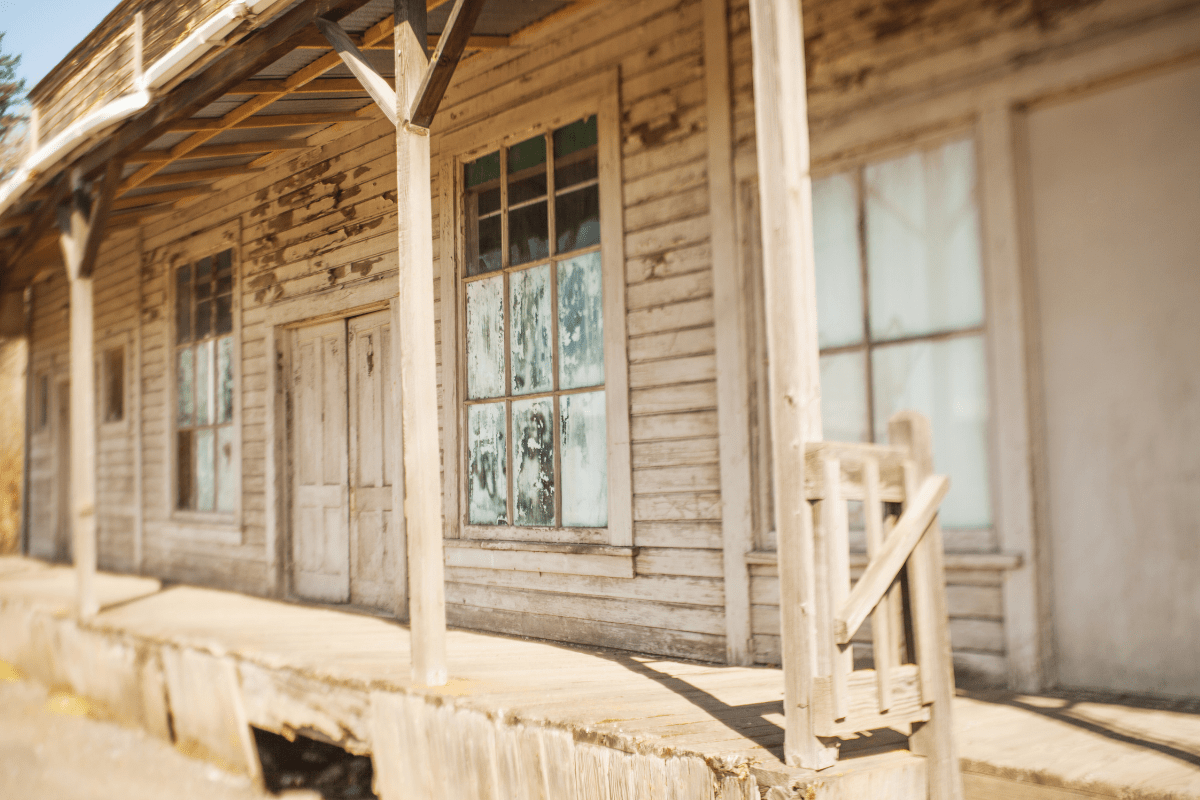Forget everything you think you know about Arizona cuisine being just tacos and margaritas. This sun-soaked state has quietly become one of America's most exciting culinary destinations, where ancient indigenous ingredients meet cutting-edge innovation, and a simple hot dog wrapped in bacon can earn James Beard recognition.
The surprising economics of eating in Arizona
Let's talk numbers for a second, because they're pretty wild. Arizona's restaurant industry generates a whopping $23 billion annually, employing 300,000 people across 12,000 establishments. That's a lot of chimichangas, folks.
But here's where it gets really interesting: food tourism is becoming a massive driver of the state's economy. Those 45.7 million annual visitors aren't just coming for the Grand Canyon anymore… they're dropping $80 million daily, with an increasing chunk of that going toward culinary experiences. The tourism industry now contributes $29.3 billion annually to Arizona's economy, generating over $4.2 billion in tax revenue.
And let's not forget agriculture, which adds another $5.2 billion to the mix. Arizona ranks 5th nationally for vegetable production, with Yuma County earning the title "Winter Lettuce Capital of the World." So yeah, your January salad probably has Arizona roots.
Ancient ingredients that started it all
The real story of Arizona cuisine begins over 4,000 years ago with the Tohono O'odham people, whose name literally means "Desert People."
The sacred saguaro harvest
Every June and July, something magical happens in the Sonoran Desert. The Tohono O'odham begin their traditional saguaro harvest, using 20-foot poles called kuipad (made from the ribs of dead saguaros, because sustainability isn't a new concept). The fruit, called bahidaj, tastes like watermelon crossed with fig, and it's absolutely delicious.
The harvest isn't just about food… it marks the Tohono O'odham new year and connects to monsoon ceremonies. Modern restaurants like Downtown Kitchen have started incorporating saguaro syrup into their menus, creating a 10-to-1 reduction that concentrates the fruit's unique sweetness. If you're lucky enough to visit during harvest season, some Native communities offer cultural tours where you can learn about this ancient practice.
Tepary beans: the unsung superfood
Before quinoa was cool, the Tohono O'odham were cultivating tepary beans… and honestly, these little legumes put most modern superfoods to shame. With 23 grams of protein per half cup and a low glycemic index that helps combat diabetes, they're nutritional powerhouses that thrive in the desert with just monsoon rains.
The white variety has a naturally sweet, creamy texture that works beautifully in everything from soups to hummus. The rare black tepary beans? They're like the truffles of the legume world, with an intense, earthy flavor that chefs go crazy for. You can order them online from Ramona Farms, a Native-owned operation that's been preserving these heritage crops for generations.
Desert ingredients you won't find anywhere else
Arizona's indigenous communities have been using desert plants in ways that would make any forager jealous:
- Mesquite pods: Ground into protein-rich flour
- Prickly pear cactus: Both pads and fruits
- Cholla buds: Taste like green beans meet artichokes
- Chiltepin peppers: Tiny but mighty heat bombs
Companies like Hayden Flour Mills are making these ingredients accessible to home cooks and restaurants alike. Trust me, once you try mesquite flour pancakes, regular pancakes will seem boring.
The dishes that define Arizona
Some states have a signature dish. Arizona has several, and they're all delicious in completely different ways.
The Sonoran hot dog phenomenon
Picture this: a bacon-wrapped hot dog, grilled until the bacon is crispy, nestled in a soft bolillo roll, then topped with beans, tomatoes, onions, mayo, mustard, and jalapeño salsa. This is the Sonoran hot dog, and it's Arizona's greatest contribution to street food culture.
Born in Hermosillo, Mexico in the 1940s, these bad boys crossed the border and became a Tucson sensation in the 1970s. Today, El Guero Canelo in Tucson has James Beard recognition… making this the only hot dog in America with such prestigious culinary credentials. For the authentic experience, hit up Nogales Hot Dogs at 20th Street and Indian School Road in Phoenix after 7 PM, or try El Caprichoso for a sit-down version.
The great chimichanga debate
Arizona loves a good origin story controversy, and the chimichanga delivers. Two restaurants claim to have invented this deep-fried burrito of glory. El Charro Café in Tucson says Monica Flin accidentally dropped a burrito in the fryer in the 1950s and exclaimed "chimichanga!" (basically the polite version of a Spanish swear word). Meanwhile, Macayo's in Phoenix claims Woody Johnson created it in 1946 by experimenting with leftover burritos.
Whoever invented it, we can all agree it's delicious. And distinctly Arizonan… you won't find chimichangas in traditional Mexican cuisine. It's Arizona's gift to the "let's deep-fry everything" movement, and we're not sorry.
Fry bread: complicated history, delicious results
Native American fry bread carries heavy history. Created during the traumatic 1864 Navajo Long Walk, when indigenous peoples were forced to make food from government rations of flour, lard, salt, and baking powder, it's become a symbol of both survival and cultural adaptation.
Today, fry bread serves as the foundation for Navajo tacos (topped with beans, meat, cheese, lettuce, and tomatoes) or can go sweet with honey and powdered sugar. The Fry Bread House in Phoenix earned a James Beard America's Classics Award, recognizing both the dish's cultural significance and its evolution into contemporary cuisine.
Cultural fusion at its finest
Arizona's position along the Mexican border created unique culinary conditions that set it apart from other Southwestern states.
The Sonoran difference
Unlike New Mexico's Spanish colonial influences or Texas's Tejano traditions, Arizona developed distinctly Sonoran characteristics. When Father Eusebio Kino introduced wheat, cattle, and European farming techniques in the late 1600s, he set patterns that still define the cuisine today.
Sonoran cooking emphasizes fresh ingredients and simple preparations over complex sauces. The region's famous paper-thin flour tortillas are stretched by hand until almost translucent… a skill that takes years to master. These tortillas are essential for the cheese crisp, an Arizona specialty that's like a quesadilla's crispy cousin. Linda Ronstadt, Tucson's most famous daughter, calls it her favorite hometown dish.
Mining towns and cowboy cuisine
The copper, silver, and gold rushes brought waves of international workers to towns like Tombstone and Bisbee, each group contributing their culinary traditions to the mix. Chinese immigrants introduced stir-fry techniques adapted with local ingredients. Italian miners brought pasta-making skills. Mexican workers shared family recipes passed down through generations.
The practical needs of mining camps and cattle drives… preserved foods, hearty portions, efficient cooking methods… still influence Arizona's restaurant culture. That's why you'll find some of the best steakhouses in the country here, all featuring that distinctive mesquite-grilled flavor that screams "Arizona."
Today's restaurant revolution
The contemporary Arizona dining scene perfectly balances tradition with innovation, and the James Beard Foundation has definitely noticed.
Phoenix and Scottsdale's rising stars
Bacanora stands out with chef Rene Andrade, who won the 2024 James Beard Award for Best Chef: Southwest. As Andrade beautifully puts it: "As a little kid from Nogales, Sonora, Mexico, I had this dream of being my grandma. I just wanted to be like her, she's the representation of magic to me."
Other Phoenix-area standouts include:
- Lom Wong: 2025 James Beard winner
- Beginner's Luck: Bernie Kantak's comfort food paradise
- Valentine: Pushing pastry boundaries with desert ingredients
Tucson: America's first UNESCO City of Gastronomy
In 2015, Tucson became America's first UNESCO City of Gastronomy, recognizing its 4,000-year agricultural history and 300+ years of culinary fusion. The city's taking this seriously, with six restaurants making Yelp's 2025 Top 100.
La Frida Mexican Grill claimed the #1 spot citywide with inventive dishes like birria ramen and Aguachile de Ribeye (traditionally made with shrimp, but who says you can't use beef?). Tito & Pep (#56 on Yelp's list) showcases mesquite-fired multicultural cuisine, while Tumerico proves that vegetarian Mexican food can be just as crave-worthy as the meat-heavy classics.
Farm-to-table done right
The Farm at South Mountain isn't playing around. Their 10-acre property produces 80% of the vegetables for their three on-site restaurants. At Quiessence, their fine-dining spot, the sourcing list reads like a love letter to local agriculture:
- McClendon Select (Peoria): seasonal produce
- Two Wash Ranch (New River): pasture-raised poultry
- Chula Seafood (Scottsdale): sustainable fish
Check out more farm-to-table options across the state, from Flagstaff's Shift Kitchen to Prescott's Farm Provisions.
Beyond food: Arizona's beverage scene
Arizona's drink game is seriously underrated, starting with a wine industry that would surprise most oenophiles.
Wine country in the desert
Arizona has three AVAs (American Viticultural Areas) producing increasingly acclaimed wines:
The Verde Valley AVA, two hours north of Phoenix, benefits from volcanic soils and elevations between 3,000 and 5,500 feet. Caduceus Cellars, owned by Tool's Maynard James Keenan (yes, that Maynard), leads a collection of wineries producing excellent Syrah and Rhône-style blends.
The Willcox AVA in southeastern Arizona accounts for 74% of the state's grape production across 20+ wineries. High diurnal temperature swings (hot days, cool nights) create ideal conditions for Grenache and Tempranillo. The Sonoita AVA, Arizona's first designated wine region (1984), specializes in Italian-style wines from its rolling grasslands.
Arizona now produces 300,000 gallons of wine annually, and the Verde Valley Wine Trail offers a fantastic way to explore multiple tasting rooms in a day.
Craft beer and beyond
Flagstaff's Brewery Trail features eight breweries with a digital passport program (collect stamps, win prizes!). Mother Road Brewing's Tower Station IPA has won multiple awards, while Dark Sky Brewing releases three new experimental beers weekly. Because why not?
Traditional beverages haven't been forgotten either. You'll find horchata, agua frescas in flavors like tamarind and hibiscus, and prickly pear in everything from craft cocktails to lemonades. Tepache, a fermented pineapple drink, is having a moment too.
Planning your culinary adventure
Ready to eat your way through Arizona? Here's your game plan.
When to visit
October through April offers the best weather for outdoor dining and most food festivals. Major events include:
- February: Devour Culinary Classic (Phoenix)
- April: Scottsdale Culinary Festival
- May: Willcox Wine Country Festival
- October: Arizona Taco Festival
Food tours worth taking
Arizona Food Tours, ranked #5 nationally by USA Today, offers experiences in Old Town Scottsdale, Tempe, and Phoenix's Roosevelt Row. For $89-110 per person, you'll visit 4-5 locally owned establishments, get a full meal with dessert and cocktails, and learn the cultural history behind each bite.
Markets and regular events
Year-round farmers markets provide access to local ingredients and prepared foods. The Downtown Phoenix Farmers Market and Uptown Farmers Market offer excellent selections. Food Truck Friday West (October-April) gathers 12-20 trucks weekly for an outdoor dining extravaganza.
The future tastes bright
Arizona cuisine continues evolving while honoring its roots. Organizations like Native Seeds/SEARCH preserve 160+ heirloom varieties while distributing seeds to restaurants committed to heritage ingredients. Chefs experiment with molecular gastronomy using desert botanicals. The state's pecan industry (home to the world's largest grove at 8,000 acres) and wine production show strong growth trajectories.
As Crystal Kass at Valentine demonstrates with her James Beard-nominated pastries incorporating indigenous ingredients, Arizona's culinary scene is "putting Phoenix's pastry scene on the national map." The future promises even more innovation built on a foundation of ancient wisdom and cultural fusion.
Your Arizona food bucket list
Before you go, here's your essential Arizona eating checklist:
- Sonoran hot dog from a street cart
- Chimichanga at El Charro or Macayo's
- Fry bread taco
- Cheese crisp with green chiles
- Tepary bean dish
- Prickly pear margarita
- Wine tasting in any AVA
- Farm-to-table dinner experience
Arizona's culinary identity has finally emerged from the shadows of its Southwestern neighbors to claim its rightful place in America's food landscape. From sacred saguaro harvests to molecular gastronomy experiments with desert botanicals, from humble street cart hot dogs to James Beard Award-winning fine dining, this is a food scene as dramatic and surprising as the state's landscapes.
So come hungry, leave happy, and don't forget to try the bacon-wrapped hot dog. Trust us on this one.





